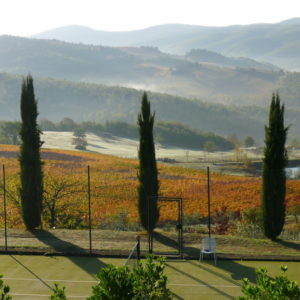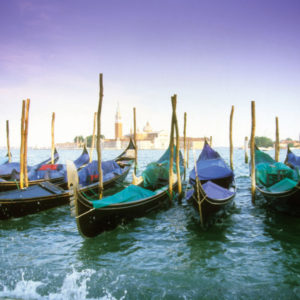Information and Videos courtesy of Italian National Tourist Board North America
Italy is a dreamlike country, passionate about its rich culture, culinary delights and historical marvels. Italy has a wealth of natural wonders and artistic showpieces uncommon to most other nations. It explodes with museums, art, ruins, countryside dotted with hills and vineyards, and Riviera with clinging towns that are daunting to digest.
Milan is the main city found in Lombardy and is a surprisingly engrossing destination. It is a centre of fashion and international business, and today, the most modern city in Italy.
Adjacent Bergamo is divided in two parts: an old hill town, Bergamo Alto, and the more modern Bergamo Bassa.
Lake Como is set in an idyllic landscape of mountains and rugged hillsides, and shrouded in an almost eerie calm. The lakeside village Cernobbio was the favourite resort of the exiled Queen Caroline of England in the early 19th century while the town of Bellagio enjoys spectacular views of the entire expanse of the lake and the Alps.
Lake Maggiore is part of the sparkling water of the Italian Lake District, nestling up against the foothills that stretch well into Switzerland’s Alps.
Then there is Stresa, a fashionable lake resort and a starting point for visits to the Borromean Islands.
In the region of Piedmont you find Turin (Torino), the industrial giant and land of picturesque mountains that borders Switzerland and France, where some of the most sophisticated cuisine and wine in Italy can be found.
The Veneto region is home to Venice, an extraordinary floating medieval town, full of cobbled streets that weave around canals and through majestic squares. Verona is another one of Veneto’s romantic riverside cities, and is a vibrant trading centre that is one of the most prosperous in northern Italy. Not forgetting Padua, an old university town that has an illustrious academic history and is rich in art and architecture.
Arezzo for instance, is a well preserved medieval town, distinguished as the birthplace of some of Tuscany’s most famous minds.
Florence is a vast and cultural monument, renowned as the birthplace of the Renaissance. It is a vital, beautiful city, a treasure house of great art and architecture. Fiesole is an ancient settlement, standing in hilly countryside overlooking Florence.
Pisa is the village with the Leaning Tower and Luca is lesser known but still fascinating.
Then there is San Gimignano, a medieval town surrounded by well-preserved ancient walls.
Siena is considered as the embodiment of the Renaissance. In the region of Emilia-Romagna, Bologna is the capital. The city is mainly known for its gastronomic creations.
Ravenna on the other hand, is considered as the capital of the Western art world with its churches and the mosaics within them.
In the Umbria region, or ‘’The Green Heart of Italy’’, one will find cities such as Perugia, Assisi, Spoleto, Orvieto, Todi and Deruta.
In the Liguria region, one will find the glamorous city of Portofino, an exclusive playground for the wealthy. Also Cinque Terre can be found there. It contains of five villages that are dramatically situated along a strip of rocky coastline. Last but not least is Italy’s capital city,
Rome, a heady blend of artistic and architectural masterpieces, classical ruins and extravagant baroque churches and piazzas. A veritable living museum, you can see and touch the city’s 2,700 years of history which are on display everywhere you look.
Naples is the city with history as colourful as its streets and arousing passionate reactions from visitors. Its long history of foreign supremacy has left Neapolitans deeply distrusting, a trait that still lingers today.
Then there’s Pompeii, which was not nearly as well known in its own time as it is today due to the extensive damage by an earthquake in AD 63 followed by further devastation from the explosion of Vesuvius 16 years later.
The Amalfi Coast is spectacularly beautiful, stretching and taking in the villages of Positano, Ravello, and Amalfi. Along this coast, rugged mountains crash directly into the sea, leaving fantastically shaped rock formations and vertical towns tumbling into the sea.
Amalfi itself is the largest town on Italy’s breath-taking coastline. Sorrento boasts lush, shady gardens and stunning views. Then there is the small dreamlike fishing village of Positano which is also an affluent and exclusive resort. Its tiny pastel-colored villas cling to a steep mountainside as they descend to the sea.
The island of Capri is a little slice of paradise Located on the south side of the Gulf of Naples in the Campania region of Italy. The island is a rugged landscape with its upscale hotels and designer shopping, handmade leather sandals and limoncello. You will find the famous natural site the Blue Grotto, a dark cavern where the sea glows electric blue, the result of sunlight passing through an underwater cave. In summer, Capri’s dramatic, cove-studded coastline draws many yachts.
Ischia is a beautiful volcanic island, the largest island in the bay of Naples. It lies at the northern end of the Gulf of Naples, about 19 miles, about an hour ferry from the city of Naples. Known for its mineral-rich thermal waters. Hot springs bubble up at Maronti Beach, in the south.
The sea reigns over this region with its colors that migrate into the coves, along the coasts, towards the beaches and the most popular resorts. An example is the Costa Smeralda (Emerald Coast) with Porto Cervo set as its gemstone and uniting the history and culture of ancient traditions with a joyful and colourful nightlife. Porto Cervo was named after its enchanting cove that resembles the antlers of a deer; the Old Port is considered the best-equipped touristic port in the Mediterranean Sea. Porto Rotondo is also a famous location; it overlooks the wide Gulf of Cugnana and is full of villas and piazzas swathed by such a splendid natural environment as this.
Those who prefer the mountains can explore the area of Gennargentu, the vastest mountain range in Sardinia; with its peculiar landscape, it proves that the loveliest painter of them all is Mother Nature herself. This region is rich in flora and fauna, with its mouflons, golden eagles, Sardinian deer and several other species now threatened with extinction.
Among its wonders, Sardinia offers the visitor the Nuragic complexes scattered all over the territory. These monuments are unique to the world, testifying to an ancient culture that – though it endured from the 16th to 15th Centuries B.C. still rains rather mysterious. The Nuragic constructions were built using great blocks of stone and developed around a central cone-shaped tower that communicates strength and power. These are archaeological sites where it is possible to grasp the archaic charm of ancient rituals and domestic life. Of these many constructions, the Barumini complex, in the Province of Cagliari, is among the sites in the UNESCO World Heritage List.
The provinces of the region are: Cagliari (regional capital), Carbonia-Iglesias, Nuoro, Olbia-Tempio, Oristano, Medio Campidano, Sassari and Ogliastra.
April to June and mid-September to October—temperatures are usually comfortable, regions colors are more vibrant, and the crowds have lessened. July through early September the country experiences the most visitors.
Showing all 2 results
-
 Europe & Russia, Hot Destinations, Italy
Europe & Russia, Hot Destinations, ItalyClassic CHIANTI – your Luxury Villa Home away from Home!
Read moreNeed Assistance?
800-227-5317 | sales@pacific-destinations.com
Tell us where and when you want to go and we’ll give your request our immediate attention! No high pressure sales, just straight talk and sound advice!

